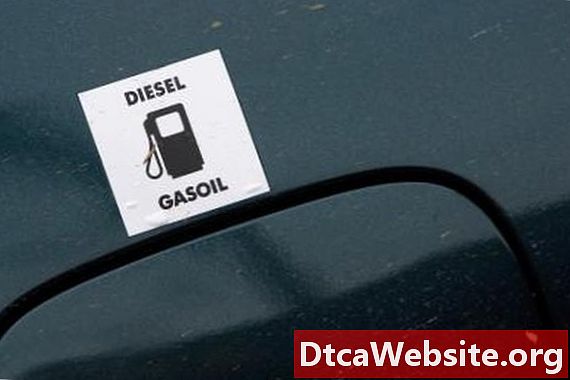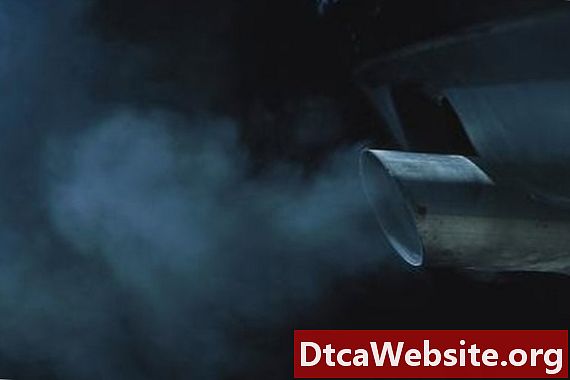
Contenu
If you had to evacuate the scene of a natural disaster, civil unrest, terrorist attack or economic collapse, would your vehicle have what it takes? Can it go off-road, travel long distances without refueling and carry heavy loads? Are cheap spare parts readily available? Is it easy to repair and modify? Does it blend in or turn heads? If you want to get there in one piece, youll need a vehicle that meets these demands.
No Show and All Go
Step 1
Select a vehicle. You need transportation thats tough, reliable and versatile. Pickup trucks meet these requirements, and domestic trucks are cheaper and easier to repair, and have better parts availability, than foreign models. Since Fords F150 has been the best selling domestic truck for the past 50 years, its the perfect choice for our base vehicle.
Step 2
Modify the electrical system. Electronic ignitions improve performance, but theyre harder, and more expensive, to diagnose and repair than a distributor with points and condenser. The electromagnetic pulse of a nuclear explosion will disable electronic ignitions. Since they are the weak link on Ford V8s anyway, youll be better off if you buy an 1980s pickup with a 302 V8 carburetor and replace the ignition. While youre at it, upgrade the charging system with a 65 amp alternator and a deep cycle battery thats connected in parallel to your first one. Youll have extra power for auxiliary devices and the ability to keep your engine running if the alternator dies.
Step 3
Modify the fuel system. A carbureted engine is a must, as the switch to fuel injection created the same maintenance issues as electronic ignitions have. The high cost and limited availability of diesel fuel makes gasoline engines the best choice unless your diesel can run on cooking oil. Even then, you can covert gas engines to run on propane, which has many advantages over diesel. Whatever fuel you use, add a second tank to double your range. The more ground you can cover without refueling, the better.
Step 4
Modify the drive-train and suspension. A manual transmission, with a limited-slip rear differential, is a good place to start. Avoid automatics since theyre expensive and difficult to repair, less reliable than a stick and impossible to push start. To improve your load stability, beef up the rear springs. Youll get longer life and better traction on any terrain if you install six-ply tires that have moderately aggressive treads. In a four-wheel drive, you can change the transfer case gearing to 4:1 or lower and improve your ability to power through obstacles and climb steep hills.
Add additional equipment. A class-three hitch with heavy-duty front and rear bumpers will increase your hauling capacity and impact resistance. Get a bed cover for secure storage and a dry sleeping area. Install a mobile amateur radio, scanner and am/fm/sw unit to cover your communications needs. Replace your headlights with quartz halogen units and add fog lights to the front and rear for better visibility. A drivers-side mounted spot light, like the type on police cruisers, is an effective non-lethal weapon and a way to light up the area before you enter it. Add a hidden fuel-cutoff switch to make sure your vehicle stays put until you need it.
Items you will need
- Complete set of hand tools
- 6 quarts of motor oil (AC Delco)
- 4 quarts of synthetic gear oil
- 1 gallon of windshield solvent
- High lift jack (sheep header jack by Hi-Lift)
- Spare tire (same size as on the vehicle)
- 2 quarts of automatic transmission fluid (for power steering)
- Spare heater hose, fuel hose, and vacuum hose
- Long pieces of different electrical wire gauges
- Assorted electrical connectors and ties
- Electrical tape, duct tape, longest ignition wire (from last replacement)
- Wood hand saw and axe
- Compact and full size shovels
- Spare fuel and water pump, thermostat, and upper/lower radiator hoses
- Complete set of belts
- Spare oil and fuel filters
- Air compressor hose, impact wrench, air chuck, and tire spoons
- Spare front and rear drive shafts, and short side drive axle
- differential cover for front axle and gaskets for both differential covers
- Full-time hub gears and covers for front axles
- Backpack size survival gear
- 4 two-liter bottles of bottled water
- Tire repair kit, factory jack and crank rod
- 3-cell Maglite flashlight
- Oil filter wrench and grease gun
- Insulated and regular coveralls
- Cold weather gear
- Propane torch, solder and flux
- Spare stop, turn, and interior bulbs
- Spare universal joint of each size on vehicle
- 4 foot section of 1 inch angle iron
- Haynes and factory service manuals
- Hack saw and winch kit
- Spare spark plugs and cap and rotor (on spare distributor)
- Ratchet type tie-down straps and 50 feet of small rope
- Spare front axle spindle (with bearings and seals)
- Shop rags, hand cleaner, WD-40, teflon tape, and wire brush
- Large and small fire extinguishers
- 6 quarts of regular gear oil
- 3 gallons of 50-50 antifreeze
- Large bottle of brake fluid
- Large first aid kit
- Snatch strap (60,000 lb)


